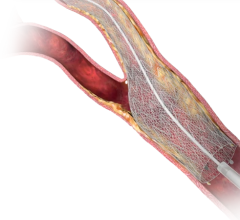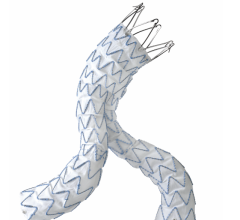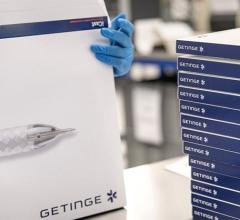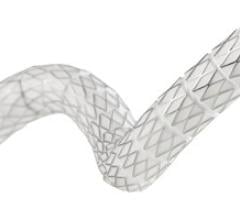June 2, 2009 – During their report Friday at the 63rd Annual Meeting of the Society for Vascular Surgery, Seshadri Raju, M.D., FACS, and other researchers from the University of Mississippi in Jackson offered details about how many patients with severe symptoms of chronic venous insufficiency (CVI) often can be treated with newer, minimally invasive stent treatment without surgery.
Venous return from the lower limbs may be affected when major veins are obstructed (stenosis or occlusion) or when venous valves malfunction, allowing abnormal reverse flow (reflux). When this happens, CVI can occur. Also contributing to the development of CVI can be being overweight or pregnant, lack of exercise, or standing or sitting for a long time without much leg movement. Elderly patients who are sedentary and prone to relative immobility are susceptible to the development of CVI. Symptoms of CVI can include leg pain or tightness, swelling, or skin eczema and ulcers, which require treatment.
Traditionally, treatment has largely focused on reducing or eliminating reflux. Refluxive superficial veins can be stripped or treated by laser therapy. When deep veins are reflexive, symptoms are often more severe. Removal of refluxive deep veins is not possible and is prohibited. Correction of reflux in deep veins requires complex open surgery, which is available only in a few specialty centers and therefore not widely available.
Valve reflux can develop from idiopathic causes or because they were damaged by previous blood clots. Chronic venous obstruction commonly develops when previous blood clots change to fibrous (scar) tissue. Venous obstruction also can be caused by mechanisms other than blood clots but this is thought to be relatively rare.
According to Dr. Raju, intravascular ultrasound (IVUS) has found that obstructive deep vein lesions are found in more than 90 percent of CVI patients with severe symptoms. In roughly half of the cases, the cause of obstruction was prior blood clots and in the other half nonthrombotic mechanisms previously thought to be relatively rare as etiology. Deep valve reflux is commonly present as well in both types of obstruction.
During their report they said CVI can be treated with stents alone. This outpatient procedure incorporates stent placement in iliac veins via a catheter introduced through a needle stick in a thigh vein. The iliac veins are major venous drainage pathways from the lower limbs and are important sources of deep venous obstruction. During the study, researchers reviewed 1,487 CVI cases treated by venous stents in iliac veins using IVUS for diagnosis and stent placement. The study focused on 513 of these limbs that had associated reflux in deep veins.
"This research is a basis for a new paradigm in the treatment of CVI," said Dr. Raju. "Clinical results were impressive after stent placement alone and symptoms were so greatly relieved that further correction of the refluxing valves was not found to be necessary. Complete relief of pain was noticed in 83 percent of patients, which was sustained long-term (six years). Also at six years, swelling disappeared in 46 percent of patients and was improved significantly in an additional 25 percent of patients. A total of 63 percent of leg ulcers remained healed at five years after the procedure and quality of life measures also were improved."
He added that CVI is widely prevalent and is estimated to be three times as common as PAD. It affects all age groups and both sexes though more common in women.
"Although seldom limb or life threatening, chronic venous insufficiency is a significant cause of discomfort and disability," said Dr. Raju. "Work loss (working age population more often affected than PAD) and health care expenditures in treating the chronic condition is estimated to be substantial in Western countries. Patients with leg ulcers resulting from the CVI is a significant fraction of all patients treated in wound care centers. Because of its relative simplicity, stent technology is expected to be more widely available than complex open repair techniques benefiting a larger fraction of affected patients."
For more information: www.vascularsociety.org


 November 24, 2025
November 24, 2025 









